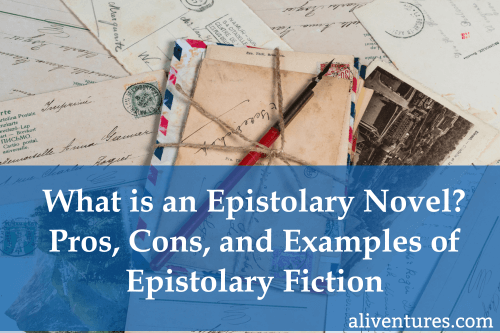You might have heard the term “epistolary novel” bandied around in writing circles or book groups. An “epistle” is a letter—and “epistolary fiction” just means a story written in the form of letters.
These days, stories that are written
as diary entries, text messages, emails, and more all count as epistolary too. Essentially, if we’re supposed to imagine that the character has written the text we’re reading, then it’s an epistolary novel.
We’ll dig a bit more into that, before looking at some types of epistolary novels, the pros and cons of the epistolary form, and some specific examples of contemporary epistolary novels across a range of
genres.
What is an Epistolary Novel?
An epistolary novel is a novel that’s told through letters, emails, diary entries, newspaper reports, or other fictitious texts. Sometimes, all the text is written by the same character (in the form of diary entries or only one side of the correspondence); other times, we have back-and-forth letters,
or multiple different formats.
The epistolary novel goes back a long way—to the late 17th century, in England (and earlier elsewhere in Europe). Many classic 18th century novels are epistolary, like Samuel Richardson’s novels Pamela, Clarissa, and The History of Sir Charles Grandison and Pierre Choderlos de Laclos’s Les Liaisons Dangereuses … but the epistolary form
isn’t consigned to history. The Guernsey Literary and Potato Peel Pie Society (2008) is entirely composed of letters, for instance.
Read more...

